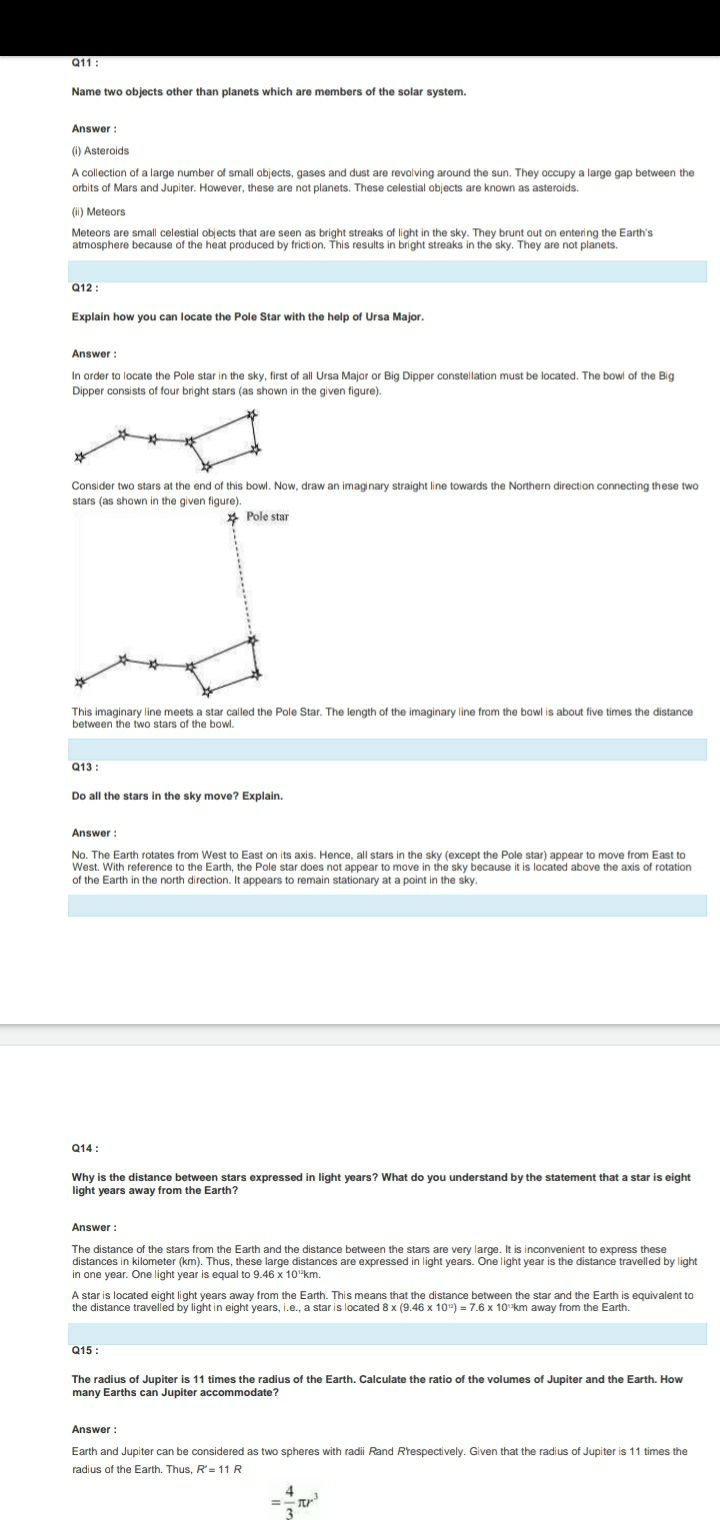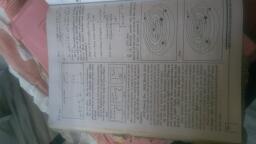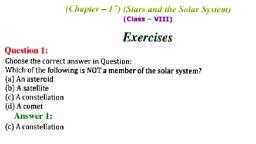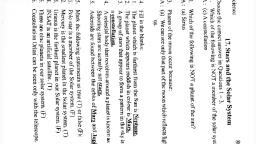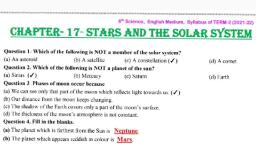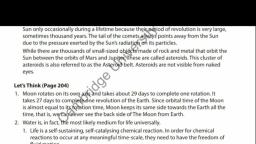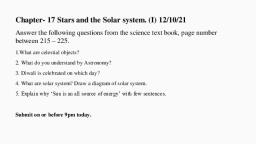Page 1 :
at, , [Name two objects other than planets which are members of the solar system., , nsw, , , , (i) Asteroids, , ‘collection ofa large number of small objects, gases and dust are revolving around the sun. They occupy a large gap between the, ofbits of Mars and Jupiter. However, these are not planets, These celestial objects are known as asteroids,, , , , (i) Motoors, , ‘Meteors are smal colestal objects that are sen as bright streaks of ight in the sky. They brunt out on entering the Earth's, aimosphere because of the heat produced by friction, Ths resus in bight streaks in the sky. They are not planets,, , ar, , , , Explain how you can locate the Pole Star with the help of Ursa Major., , Answor, , In o1der to locate the Pole star in the sky, first ofall Ursa Major or Big Dipper constellation must be located. The bow! of the Big, Dipper consists of four bright stars, , w, , Consider two stars at the end of this bow. Now, draw an imaginary straight ine towards the Northern direction connecting these two, , , , shown in the given figure)., , , , +4+—, , stars (as shown in the given figure), a Pole star, , This imaginary line moets a star called the Pole Star. The length of the imaginary line from the bow! is about five times the distance, botwaen the two stars of the bow, , ars, , Do all tho stars in the sky move? Explain., , Answor, , ‘No. The Earth rotatos trom West to East on its axis. Hence, al stars inthe sky (excopt tho Pole star) appear to move from East to, West. With reforence to the Earth, the Pole star does nat appear to move in the sky because itis lacated abave the axis of rotation, ‘ofthe Earth inthe north direction. It appears to remain stationary ata point inthe sky., , , , an, , Why is the distance betwoen stars expressed in light years? What do you understand by the statement that a star is eight, light years away from the Earth?, , Answer, ‘The distance of the stars from the Earth and the distance between the stars are vary large. It is inconvenient to express these, , distances in kilometer (km). Thus, these large distances are expressed in ight years. One light year isthe distance travelled by light, inane year. One light year is equal to 9.48 x 10°km., , , , A stars located eight light years away from the Earth. This means that the distance between the star and the Earth is equivalent to, the distance travelied by ight in eight yas, e., a stars located 8 x (9.46 x 10°) = 7.6 x 10°km away trom the Earth, , ais:, , ‘The radius of Jupiter is 11 times the radius of the Earth. Calculate the ratio of the volumes of Jupi, ‘many Earths can Jupiter accommodate?, , 1 and the Earth. How, , , , Answe, , , , Earth and Jupiter can be considered as two spheres with radii Rand Rtespectively. Given that the radius of Jupiter is 11 times the, radius of the Earth, Thus, R’= 11 R
